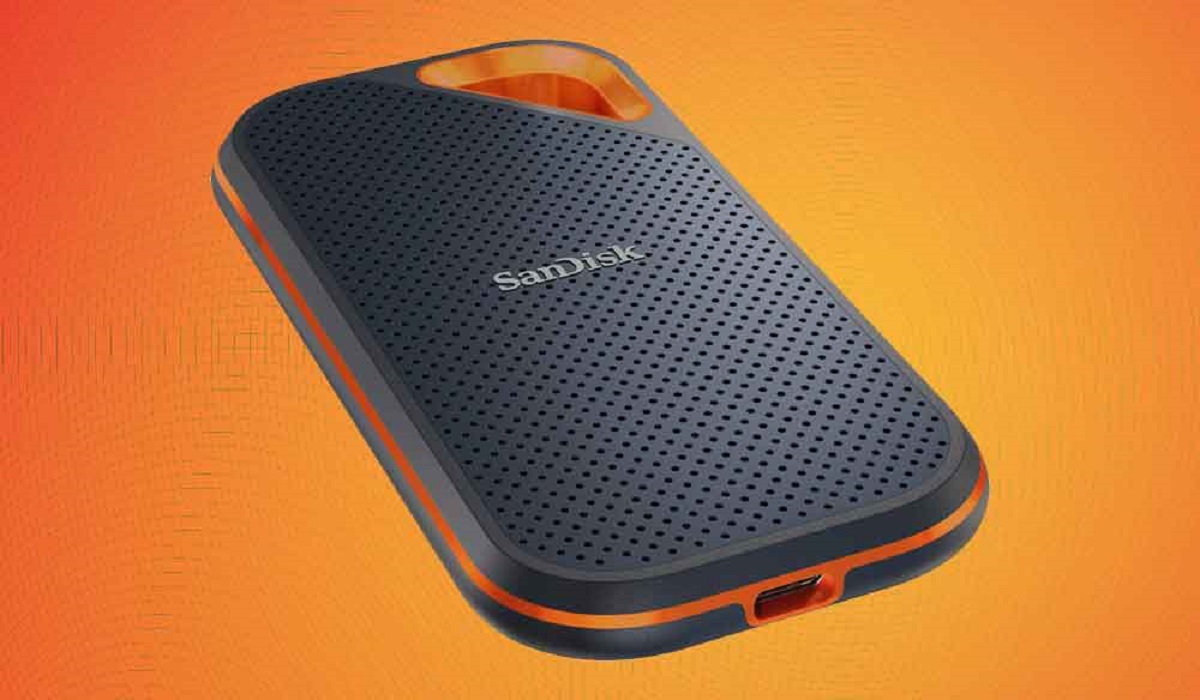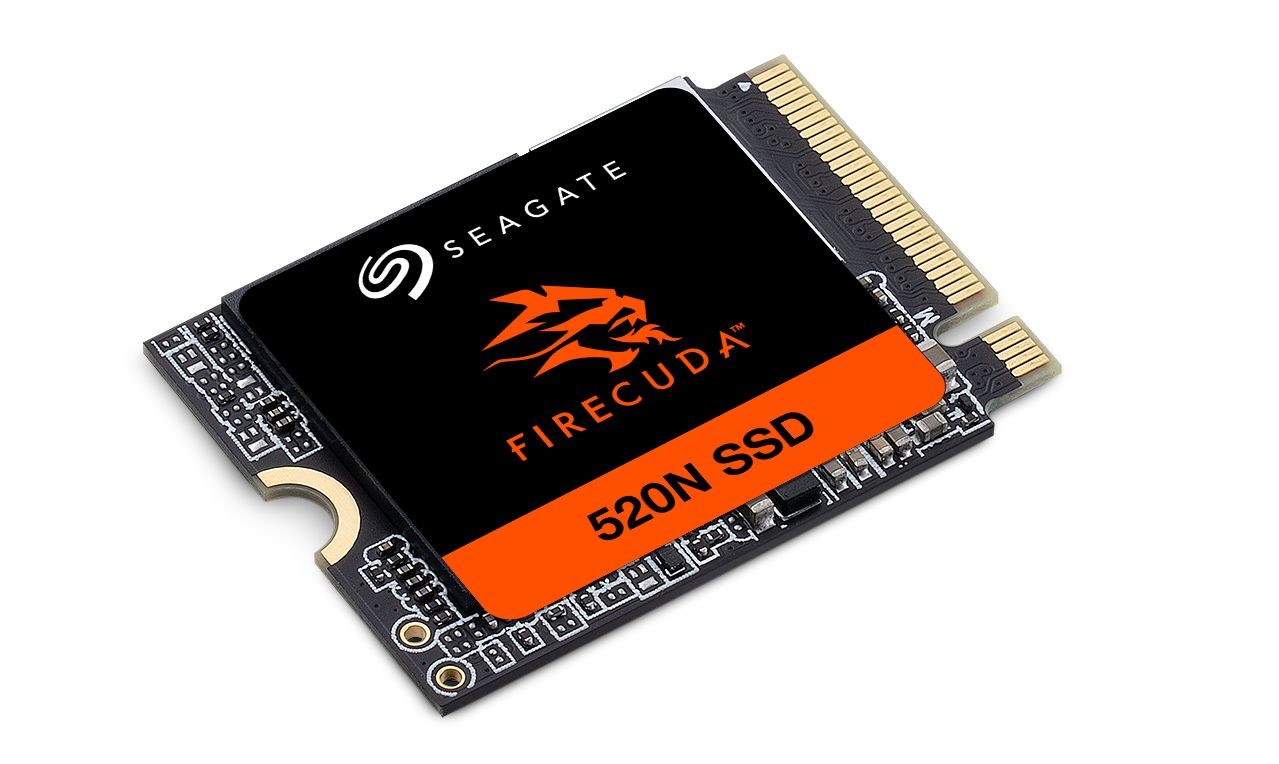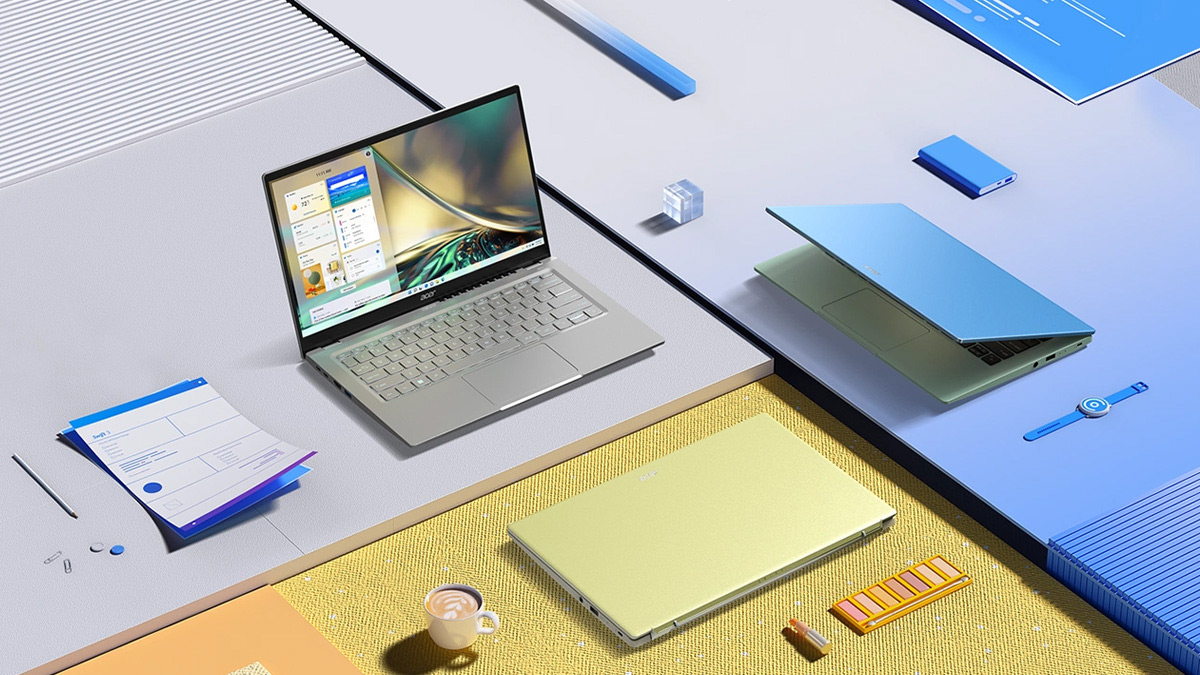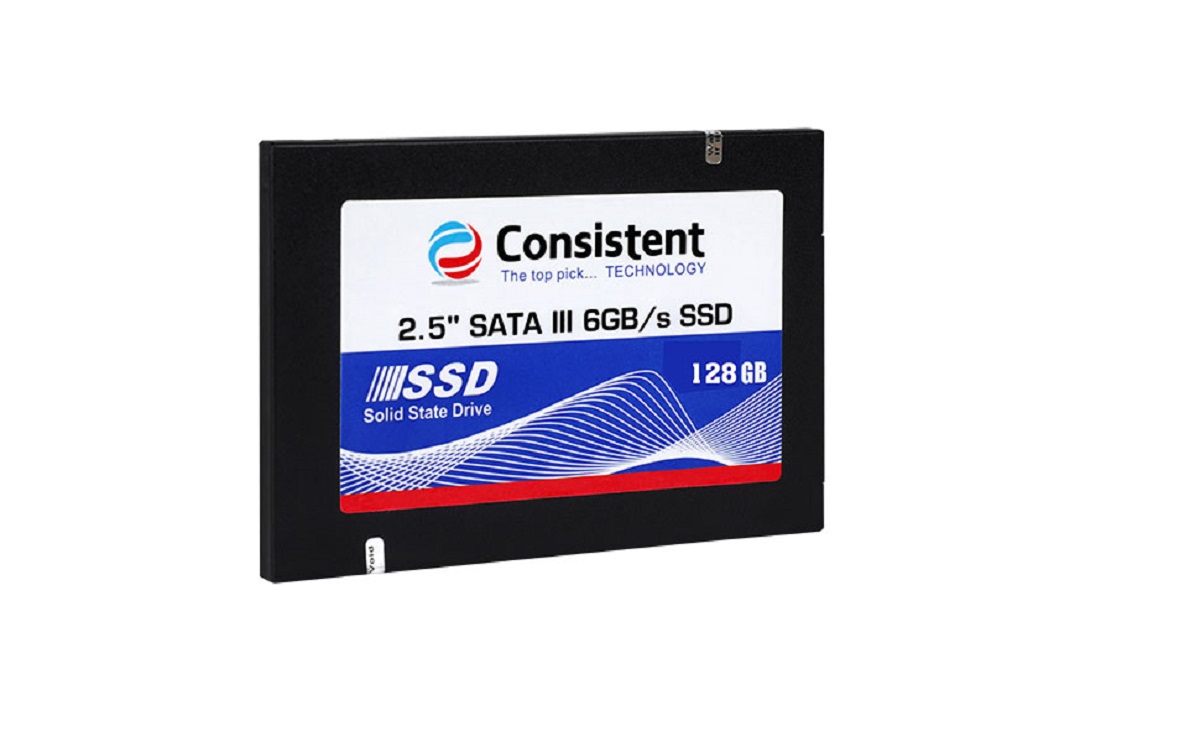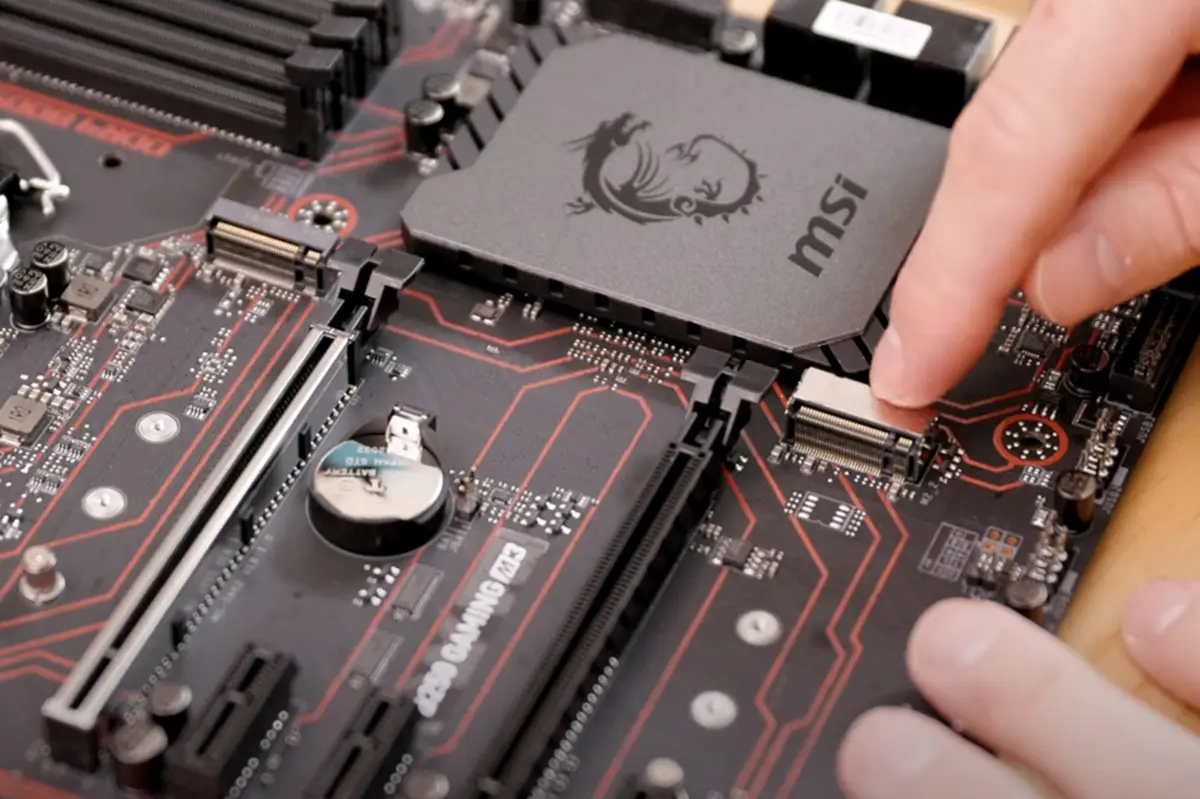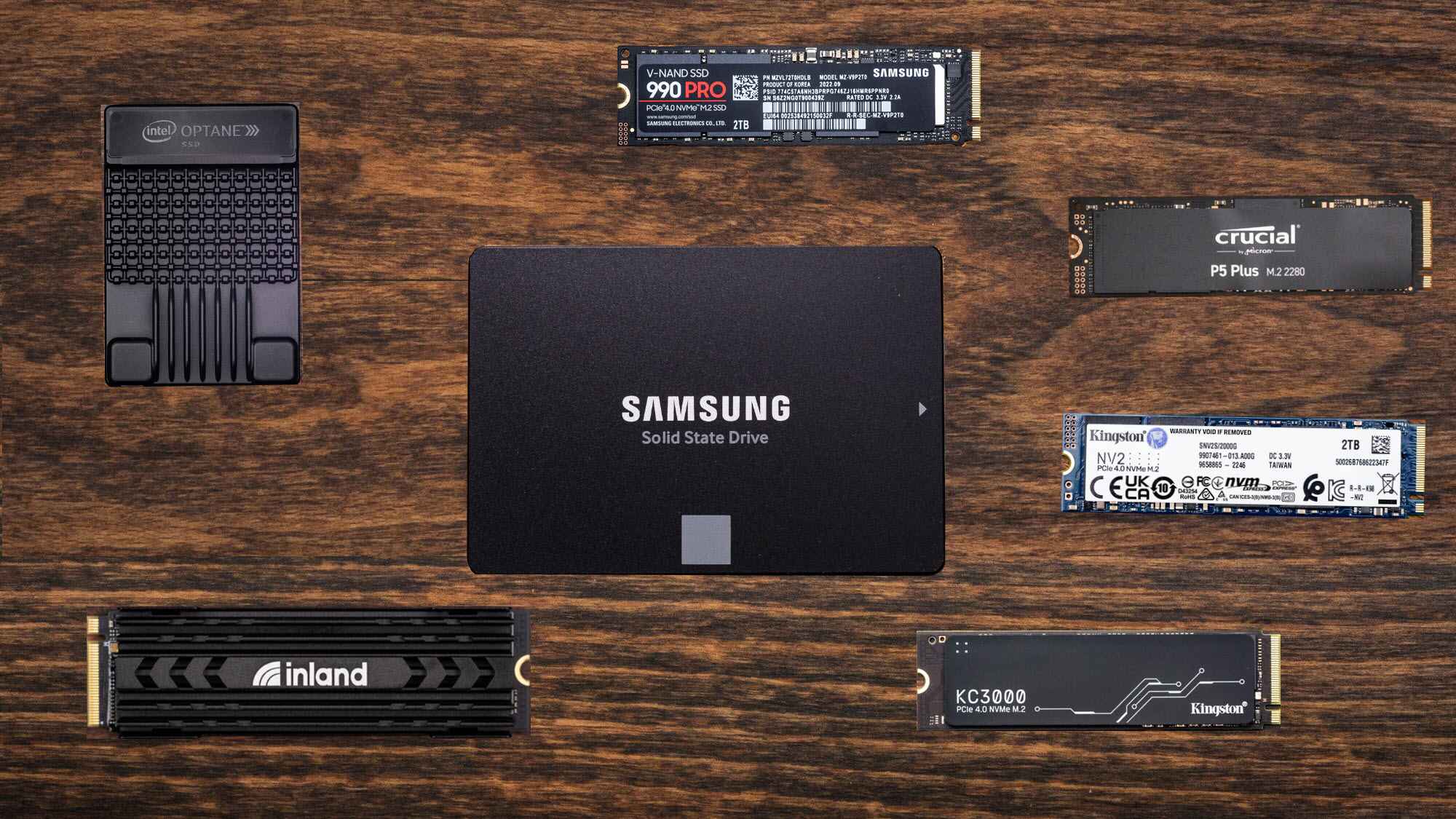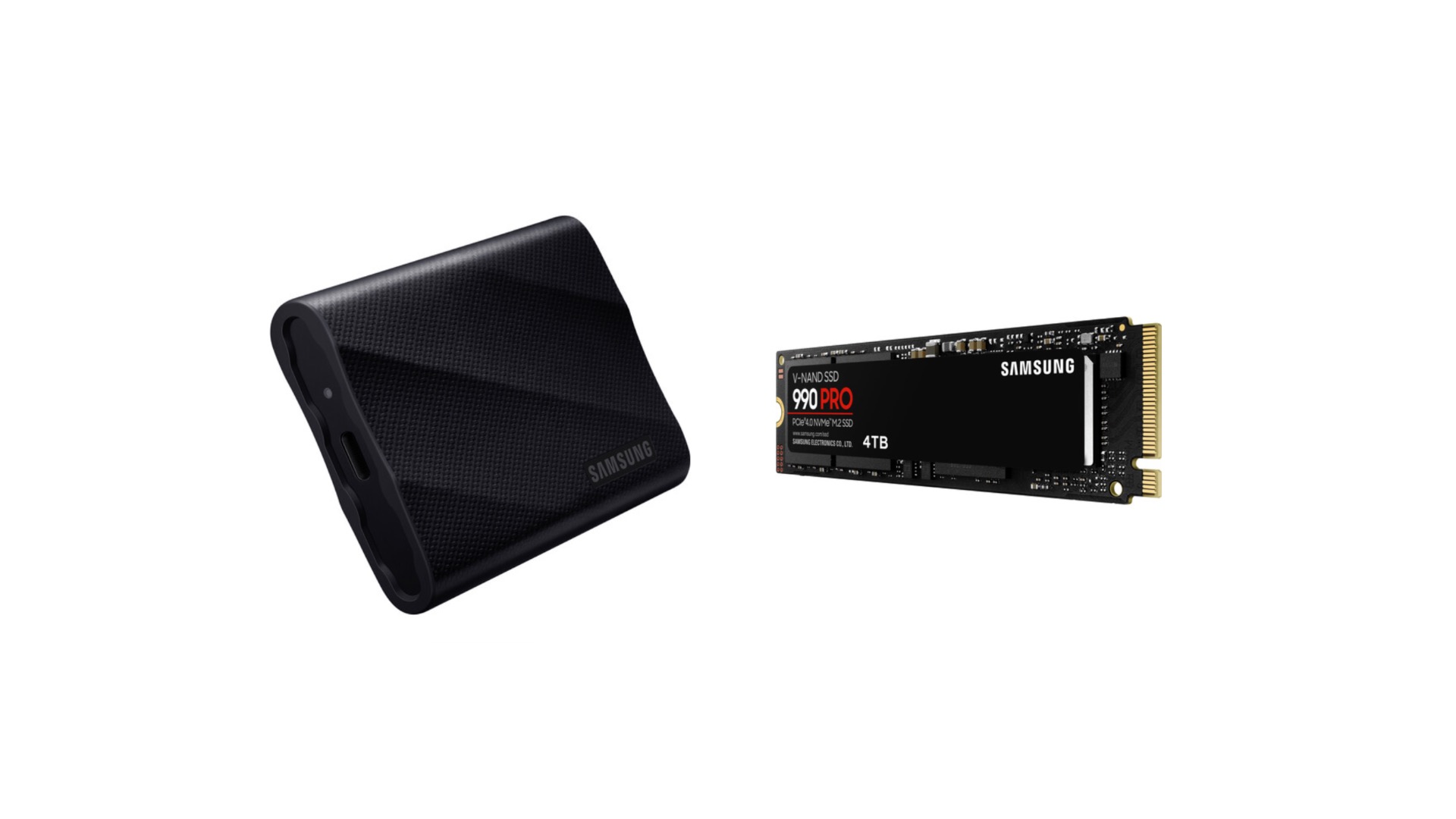Introduction
Welcome to the rapidly evolving world of portable solid-state drives (SSDs). In an era where digital content is expanding at an exponential rate, the need for high-speed, compact, and reliable storage solutions has become paramount. Portable SSDs have emerged as a game-changer, offering users the ability to carry massive amounts of data with ease.
Gone are the days when bulky and fragile hard disk drives (HDDs) dominated the external storage market. Portable SSDs come in sleek and compact designs, offering blazing-fast transfer speeds and ample storage capacity. These devices use flash memory technology to store data, which results in faster read and write speeds compared to traditional HDDs.
One of the major advantages of portable SSDs is their speed. With transfer speeds that can reach up to 1,000 megabytes per second (MB/s), they significantly reduce the time required to transfer large files, such as HD videos or high-resolution photos. This makes them ideal for content creators, photographers, videographers, and anyone who deals with large amounts of data on a regular basis.
Additionally, portable SSDs are shock-resistant and more durable than HDDs. They lack mechanical components, such as spinning disks, which are prone to damage from drops or vibrations. This makes them an ideal choice for individuals who are always on the go and need reliable storage that can withstand the rigors of travel.
The market for portable SSDs has grown exponentially in recent years, with several reputable brands offering an array of models catering to various needs and budgets. These devices come in different storage capacities, including 250GB, 500GB, 1TB, and even up to 4TB. The larger capacity options provide ample room for storing high-definition videos, professional-grade photographs, and even entire PC backups.
While portable SSDs have come a long way, there is still an ongoing pursuit to make them even more compact and efficient. Manufacturers are continually striving to push the boundaries of storage technology, aiming to deliver smaller yet more capacious SSDs.
In this article, we will explore the current state of portable SSDs and delve into the fascinating possibilities of how big these devices can potentially get. We will also discuss the factors that influence the size of portable SSDs and highlight the future trends in this rapidly evolving industry.
What are portable SSDs?
Portable SSDs, also known as external solid-state drives, are compact storage devices that utilize solid-state memory to store and retrieve data. Unlike traditional hard disk drives (HDDs), which use spinning disks and magnetic heads, portable SSDs rely on flash memory technology.
Flash memory is a type of non-volatile storage media that retains data even when power is removed. This enables portable SSDs to offer faster read and write speeds, increased durability, and reduced power consumption compared to HDDs.
Portable SSDs typically come in a small form factor, making them easy to carry and transport. They are designed to connect to various devices, including laptops, desktop computers, gaming consoles, and even smartphones and tablets, using different interfaces such as USB, Thunderbolt, or SATA.
One of the key advantages of portable SSDs is their speed. Because they lack moving mechanical parts, portable SSDs can access data nearly instantly, resulting in significantly faster file transfer and load times compared to HDDs. This makes them highly beneficial for tasks that require quick data access, such as editing and rendering high-resolution videos or running demanding software applications.
Another advantage of portable SSDs is their durability. Since they do not have any spinning disks, portable SSDs are more resistant to physical shock and vibration compared to HDDs. This makes them a reliable choice for individuals who frequently travel or need to work in rugged environments.
Portable SSDs also offer a greater range of storage capacities. They are available in various sizes, ranging from smaller capacities like 250GB to larger options like 1TB or even 4TB. This makes it convenient for users to choose a suitable capacity based on their storage needs and budget.
Moreover, portable SSDs provide compatibility across different operating systems. They can be easily used with Windows, macOS, Linux, and even mobile operating systems like Android and iOS. This flexibility makes them a versatile storage solution for users who utilize multiple devices or need to transfer data between different platforms.
In summary, portable SSDs are compact, high-speed, and durable storage devices that utilize flash memory technology. They offer significantly faster data transfer speeds, increased durability, and a wide range of storage capacities. Whether you are a professional content creator, a traveler, or a casual user, portable SSDs provide a reliable and efficient way to store and access your data on the go.
Advantages of Portable SSDs
Portable solid-state drives (SSDs) bring several notable advantages over traditional hard disk drives (HDDs), making them a popular choice for individuals seeking fast and reliable storage solutions. Let’s explore the key advantages of portable SSDs:
- Speed: The primary advantage of portable SSDs is their exceptional speed. With read and write speeds that can reach up to 1,000 megabytes per second (MB/s), portable SSDs outperform HDDs by a significant margin. This means faster file transfers, quicker loading times for software and applications, and improved overall system responsiveness.
- Durability: Portable SSDs are built to withstand the rigors of daily use and on-the-go lifestyles. Unlike HDDs, which have delicate moving parts, portable SSDs have no moving components, making them highly resistant to shocks and drops. This durability makes them perfect for users who travel frequently or work in demanding environments.
- Compact Size: Portable SSDs are designed to be compact and lightweight, easily fitting into pockets, bags, or laptop sleeves. This portability allows users to carry their data with them wherever they go, ensuring easy access to important files, documents, or media anywhere, anytime.
- Energy Efficiency: Portable SSDs consume less power compared to HDDs. Flash memory technology used in SSDs requires less energy to read or write data, resulting in extended battery life for laptops, tablets, or other devices they are connected to. This energy efficiency is especially beneficial for users who rely on their devices for extended periods without access to power outlets.
- Noiseless Operation: Since portable SSDs have no moving parts, they operate silently. Unlike HDDs, which tend to produce noise from spinning disks and heads positioning, SSDs provide a quiet user experience, minimizing distractions and allowing focused work or leisure activities.
- Data Security: Portable SSDs often come equipped with built-in encryption features, ensuring the security and privacy of your data. By encrypting the stored information, you can have peace of mind, knowing that your sensitive files are protected from unauthorized access.
Overall, the advantages of portable SSDs make them a superior choice for individuals and professionals who require high-speed, reliable, and portable storage devices. Whether you are a frequent traveler, a content creator, or a student, portable SSDs offer a convenient and efficient way to store, access, and transfer your data.
The Current State of Portable SSDs
The market for portable solid-state drives (SSDs) has seen significant growth and innovation in recent years. With advancements in technology and increasing demand for faster and more reliable storage solutions, the current state of portable SSDs is impressive. Let’s take a closer look at the key aspects of the current landscape:
Increased Popularity: Portable SSDs have gained immense popularity among consumers and professionals alike. As the need for high-speed data transfers and reliable storage grows, portable SSDs have become the go-to choice for those looking for fast, portable, and durable storage options.
Higher Capacities: The storage capacities of portable SSDs have increased dramatically. While smaller capacities like 250GB or 500GB are still popular options, larger sizes such as 1TB, 2TB, or even 4TB are now more readily available. These increased capacities cater to the growing demand for storing large files, high-definition videos, and extensive multimedia collections.
Improved Performance: Portable SSDs have seen significant improvements in performance. The latest generation of SSDs utilizes technologies like NVMe (Non-Volatile Memory Express) and USB 3.2 Gen 2×2 interfaces, enabling faster data transfer speeds and reduced latency. This translates into quicker file transfers and improved overall system responsiveness.
Enhanced Compatibility: Portable SSDs are designed to be compatible with a wide range of devices and operating systems. They can seamlessly connect to laptops, desktops, gaming consoles, and smart TVs via various interfaces such as USB-C, Thunderbolt, or SATA. The compatibility across different platforms makes them versatile and convenient storage options for users of different devices.
Competitive Market: The market for portable SSDs is highly competitive, with several renowned brands offering a wide range of models to choose from. This competition has resulted in competitive pricing, improved features, and a focus on customer satisfaction. Consumers now have a plethora of options to find the portable SSD that best suits their requirements and budget.
Continued Innovation: The current state of portable SSDs is marked by ongoing innovation. Manufacturers continue to push the boundaries of technology, striving to make SSDs faster, more compact, and more power-efficient. We are witnessing advancements in 3D NAND flash memory, PCIe Gen 4 interfaces, and artificial intelligence-based wear-leveling algorithms, all aimed at enhancing the performance and reliability of portable SSDs.
With these advancements, portable SSDs have become an indispensable tool for professionals in fields like content creation, photography, videography, and gaming. They offer high-speed data transfers, large storage capacities, and the ability to carry vast amounts of data conveniently. Additionally, the falling prices of portable SSDs have made them more accessible to a wider consumer base.
In summary, the current state of portable SSDs is characterized by their increasing popularity, higher storage capacities, improved performance, enhanced compatibility, and ongoing innovation. With such advancements, portable SSDs have revolutionized the way data is stored, shared, and accessed, providing users with a fast, reliable, and portable storage solution.
How Big Can Portable SSDs Get?
The storage capacity of portable solid-state drives (SSDs) has been steadily increasing over the years, and there seems to be no limit to how big these devices can ultimately get. While the current market offers portable SSDs with capacities up to 4TB, technology advancements and continued innovation suggest that even larger capacities will be achievable in the future.
As the demand for higher storage capacities continues to rise, manufacturers are investing in research and development to meet these needs. Innovations such as 3D NAND flash memory have allowed for greater data density, enabling the creation of portable SSDs with larger storage capacities without compromising on size or performance. With this technology, we can expect to see even more spacious portable SSDs hitting the market in the coming years.
Additionally, advancements in storage interfaces also play a crucial role in determining the maximum capacity of portable SSDs. Technologies like PCIe Gen 4 offer faster data transfer speeds, allowing for more efficient handling of large amounts of data. As these interfaces continue to evolve, it is reasonable to expect that portable SSDs will be able to accommodate even higher capacities.
However, it is essential to consider that there are practical limitations to the size of portable SSDs. Factors such as cost, power consumption, and physical dimensions need to be taken into account. While larger capacities are desirable, they also come with higher production costs. Manufacturers need to strike a balance between meeting consumers’ demand for more significant storage capacities and maintaining affordable price points.
Power consumption is another consideration when it comes to increasing the size of portable SSDs. As storage capacity expands, so does the power required to operate the device. This can impact the battery life of portable devices and the overall efficiency of the SSD. Manufacturers will need to find innovative solutions to manage this power consumption effectively.
Physical dimensions also play a role in determining how big portable SSDs can get. These devices need to remain portable, lightweight, and easy to carry. Striking the right balance between storage capacity and form factor is crucial to ensuring that portable SSDs continue to meet the needs of users who value convenience and mobility.
Looking ahead, it is reasonable to expect that portable SSDs will continue to increase in storage capacity. While predicting the exact limit is challenging, it is not far-fetched to imagine portable SSDs with terabytes of storage capacity becoming the norm rather than the exception. As technology advances and manufacturers address practical limitations, we can anticipate even more spacious and powerful portable storage options in the future.
In summary, the maximum storage capacity of portable SSDs is continuously expanding due to ongoing technological advancements. While the current market offers sizes up to 4TB, future innovations and improvements in flash memory technology, storage interfaces, and overall efficiency will likely push the boundaries further. As consumers’ storage needs continue to grow, portable SSDs will evolve to meet those demands, providing users with ever-increasing capacities for their data storage and mobility requirements.
Factors Affecting the Size of Portable SSDs
Several key factors influence the size of portable solid-state drives (SSDs), as manufacturers strive to strike a balance between storage capacity, form factor, and performance. Let’s explore these factors that impact the size of portable SSDs:
Storage Technology: The type of flash memory technology used in portable SSDs plays a crucial role in determining their size. As storage technology advances, manufacturers can pack more data into smaller physical spaces. Innovations such as 3D NAND flash memory have allowed for higher data density, enabling the creation of portable SSDs with larger storage capacities without significantly increasing their physical footprint.
Storage Capacity: The desired storage capacity of a portable SSD can influence its size. Higher storage capacities typically require more physical space to accommodate the necessary memory chips. As the demand for larger storage capacities grows, manufacturers may need to increase the size of the SSD to accommodate more memory chips.
Form Factor: The form factor of a portable SSD has a direct impact on its size. Consumers value portability, and manufacturers design SSDs to be compact and lightweight for easy transport. The form factor determines the physical dimensions and shape of the device, with the aim of making it convenient for users to carry and fit into various devices and accessories.
Interfaces: The interfaces used to connect portable SSDs to devices also affect their size. Common interfaces like USB, Thunderbolt, or SATA have different physical connector sizes and considerations. Manufacturers need to ensure that the SSD can accommodate the required ports while maintaining a small and portable form factor.
Battery and Power Considerations: The size of the battery and the power consumption of a portable device can influence the size of the SSD. As devices become thinner and lighter, manufacturers must design portable SSDs with low power consumption to maximize battery life. This may affect the size of other components within the SSD, including the memory chips and controller.
Cost: Production costs play a significant role in determining the size of portable SSDs. Larger storage capacities may require more memory chips, resulting in higher manufacturing costs. Manufacturers need to find a balance between meeting consumer demand for larger capacities and keeping the SSD affordable for the market.
Heat Dissipation: Portable SSDs generate heat during operation, and proper heat dissipation is essential for maintaining performance and longevity. The size of the SSD can impact its ability to dissipate heat effectively. Manufacturers may need to consider the placement of heat sinks or other cooling mechanisms within the SSD, which can affect the overall size of the device.
In summary, several factors impact the size of portable SSDs, including storage technology, storage capacity, form factor, interfaces, power considerations, cost, and heat dissipation. Manufacturers continuously strive to find the right balance between these factors to offer portable SSDs that meet the demand for larger storage capacities while being compact, efficient, and affordable for users.
Future Trends in Portable SSDs
The landscape of portable solid-state drives (SSDs) is constantly evolving as technology advances and user demands continue to grow. Several exciting trends are emerging in the portable SSD industry that will shape the future of these storage devices. Let’s explore some of the key trends to watch out for:
Increased Storage Capacities: One of the significant trends in portable SSDs is the continual increase in storage capacities. As technology advances and manufacturing processes become more efficient, we can expect to see even larger storage options in portable SSDs. Terabyte (TB) capacities may become more common, allowing users to store massive amounts of data, including high-definition videos, extensive photo libraries, and large software applications.
Faster Transfer Speeds: The demand for faster data transfer speeds will continue to drive innovation in portable SSDs. With the development of new interfaces and improved controller technologies, future portable SSDs will offer even faster transfer rates. Technologies such as USB 4 and Thunderbolt 4 will further enhance transfer speeds and improve overall performance, allowing users to transfer large files or access data with greater efficiency.
Smaller Form Factors: Portable SSDs will continue to become more compact and lightweight. Manufacturers are striving to reduce the physical footprint of SSDs while maintaining their storage capacity. This trend is driven by the increasing need for mobility and portability, making it easier for users to carry their data on the go without compromising performance or storage capacity.
Integrated Security Features: As data security becomes more critical, future portable SSDs will feature enhanced built-in security measures. Encryption technology and biometric authentication may become more prevalent in portable SSDs, ensuring that users’ data remains protected from unauthorized access. These security features will provide peace of mind to users who handle sensitive or confidential information on their portable storage devices.
Improved Power Efficiency: Portable SSDs will continue to focus on maximizing power efficiency. As the demand for longer battery life increases, manufacturers will invest in developing energy-efficient SSDs, ensuring that portable devices can operate for extended periods without draining the battery. These power-efficient SSDs will enable users to work or play on the go without worrying about running out of battery.
Advancements in NAND Flash Technology: The continuous development of NAND flash memory technology will bring further improvements to portable SSDs. Innovations such as 3D NAND, QLC (Quad-Level Cell) technology, and TLC (Triple-Level Cell) will enable higher storage densities, improved endurance, and better performance. These advancements will result in more reliable and robust portable SSDs that can meet the evolving needs of users.
Increased Affordability: As manufacturing processes become more efficient and SSDs become more widespread, we can expect the prices of portable SSDs to become more affordable. This will make them accessible to a broader range of users, allowing more individuals to benefit from the speed, durability, and convenience of portable SSDs.
In summary, the future of portable SSDs is bright, with trends focusing on increased storage capacities, faster transfer speeds, smaller form factors, integrated security features, improved power efficiency, advancements in NAND flash technology, and increased affordability. These trends will bring about exciting advancements that will revolutionize the way we store and access data on the go, empowering users with more efficient and reliable portable storage solutions.
Conclusion
The evolution of portable solid-state drives (SSDs) has transformed the landscape of data storage, offering users fast, reliable, and portable solutions. With advancements in technology, portable SSDs have become increasingly popular, providing numerous benefits over traditional hard disk drives (HDDs).
From their compact form factor and impressive speed to their durability and improved power efficiency, portable SSDs have revolutionized the way we store and access data on the go. These devices have higher storage capacities, enabling users to carry large multimedia collections, professional-grade videos, and extensive software applications conveniently.
The current state of portable SSDs demonstrates their increasing popularity, improved performance, and enhanced compatibility across different platforms. Consumers now have a wide range of options to choose from, with various reputable brands offering an array of models that cater to diverse needs and budgets.
Looking to the future, we can expect even greater advancements in portable SSD technology. Trends such as increased storage capacities, faster transfer speeds, smaller form factors, integrated security features, improved power efficiency, advancements in NAND flash technology, and increased affordability will shape the landscape of portable SSDs.
As technology continues to advance, portable SSDs will become even more essential in our daily lives. They will empower users to store and access their data quickly and conveniently, whether they are professional content creators, travelers, or students who require reliable storage options.
In conclusion, portable SSDs have revolutionized the way we store and access data on the go. With their compact designs, impressive performance, and increasing storage capacities, they offer a versatile solution for individuals and professionals who value speed, reliability, and mobility in their storage devices. As technology continues to advance, we can expect even more exciting developments in portable SSDs, ensuring that our data is secure, easily accessible, and always within reach.







